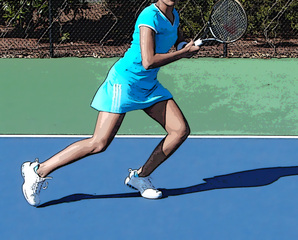Also, players who had experienced an injury or tennis-related illness during the past year were 5.4 times more likely to withdraw from a tournament for medical reasons. "Parents, coaches and players should exercise caution if there is a history of prior injury," said Dr. Neeru Jayanthi, lead author of the study. "And parents should consider enrolling their children in multiple sports."
Jayanthi is medical director of primary care sports medicine and an assistant professor in the departments of Family Medicine and Orthopaedic Surgery and Rehabilitation at Loyola University Chicago Stritch School of Medicine. He also is chairman of the education committee of the International Society for Tennis and Medicine Science and an ITPA Certification Commissioner.
Kids who play more than one sport probably are less likely to develop injuries because they have a chance to rest from the repetitive overuse of the same muscle groups. Also, cross training in other sports such as basketball and soccer uses other large muscle groups "and may enhance their developmental and athletic skills," Jayanthi said.
Players in the study began playing tennis at an average age of 6, began competing at age 9 and began to specialize at age 10. Players practiced a median of 16 to 20 hours per week, and 93 percent said they competed at least 10 months per year.
The study is the latest in a series of studies Jayanthi and colleagues have conducted on injuries in young tennis players. Earlier studies found that:
- Junior players are more likely to withdraw for medical reasons if they play five or more matches in a single tournament. Counting singles matches, doubles matches, consolation matches, etc. a player can compete in as many as 10 matches in a tournament. "The heavy match volume takes its toll as the tournament progresses, and a relatively high number of these young tennis players not only sustain injury but are unable to compete any further," Jayanthi said.
- Boys are more likely to withdraw for medical reasons than girls, and older teenagers are more likely to withdraw than younger adolescents.
- Medical withdrawal rates are significantly higher in consolation and singles matches. In some cases, players withdraw for medical reasons -- even when they are not hurt -- in order to save their rankings or because they have lost interest in playing in consolation matches.
Take home: This was a very revealing study performed by one of the top tennis doctors in the world and the major take home message is that young athletes need to play multiple sports to develop good overall athletic skills in many different movements and learn to compete under different sport and social environments. However, if the young athlete does have aspirations to play at the highest level at a certain point he or she will need to devote the majority of training time on improving his/her tennis skills (physical, mental, tactical and technical). The question is always at what age should this specialization occur? A general rule of thumb is during or just after puberty. However, individual differences must be understood and a big determining factor is motivation and desire for the sport.





 RSS Feed
RSS Feed
